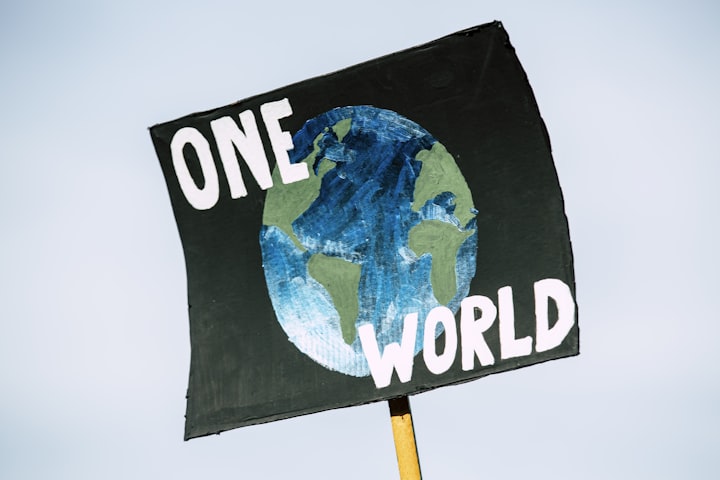Solar Small Farming is the Future
If small farms want to compete with Agribusiness, they need to get creative

There is a majestic beauty in small dairy farms. This could be because I am a lifelong Wisconsinite and grew up with them dotting my landscape. Red barns and fields of placid, happy cows chewing away on grass are emblematic of my home state. Frustratingly, the very same small farms that were once the lifeblood here are disappearing at a startling rate. In 2019 alone, the state lost 10% of viable dairy farms. Several factors go into this, but the main culprits are plummeting commodities prices and the rise of multi-thousand cow dairies known as CAFOs. What can be done to help these small farmers keep their farms? I think there is a smart solution that can help save this way of life and also work towards the sustainable future we all need. I think solar small farming is the future.
How It Would Work
Did you know that Solar companies will rent parcels of land to put their panels on? It makes sense in the long run. You need space for panels to be placed and it would be impractical for a business to purchase all of that land. So they rely on folks that have larger swaths of land available to place panels on. I'm sure you can see where this is going. Who happens to usually have an abundance of land at their disposal? That's right, farmers. You do not need to have a massive amount of land at the ready. 5 to 7 acres of land are capable of generating 1 Megawatt of electricity. Companies will usually want to be able to place a couple arrays, so having 20 acres of space that could be dedicated to this would be a good starting point.
The amount of money a company is willing to pay to lease the land varies based upon a couple of factors. There is the state that you live in. Another of the major variables is proximity to existing utility infrastructure. If the solar leasing company is going to have to create a significant amount of infrastructure to even gain access to the energy, that tends to drive the leasing rate down. The company would also have to look at how much sunlight the area receives to make sure that it is worth the investment. This can lead to prices that range from $300 to $3000 per acre. Once the price per acre is established, the landowner and the company sign a long term lease in the range of 20 years, though this can vary.
Why It Would Work
The items that Farmers produce do not exist in a vacuum. Commodities are known for their price fluctuations which can sink a small farm that is not flexible in its planning. If you put all your eggs in the milk basket and milk prices plummet, you are essentially screwed, especially if you are a small farmer. There are safeguards against this. Crop diversity and pursuing Organic agriculture, which sells at a higher rate, are just a couple of them. The beauty for a farmer when it comes to leasing some land to a solar company is that you sign a long term contract.
Let's say that you are a small farmer, or just a landowner that has some land lying fallow. We'll use 20 acres as a base example. You live in an area that has some utility infrastructure and gets decent sunlight, so the solar company rates your land at $1000 an acre. You sign a 20 year lease (love the number 20) and the company comes and installs the panels on your already non-producing land. That means the farmer will now get $20,000 a year for the next 20 years, guaranteed. This will not solve all the problems small farms face, but it would give them some breathing room to figure out how to best proceed.
If your solar farm becomes larger than 50 acres, there is an added incentive to the local municipalities. In Wisconsin, once you cross that threshold, you gain access to additional funds that are paid out to the municipality to compensate for the property taxes that will be lost when the land is leased. This can be a substantial amount that goes above and beyond any money that might have been paid out in property taxes.
All of this can be wrapped in the fact that this would help to create sustainable, clean energy. Only a blind fool would try to deny climate change as it ravages the planet, so any small steps towards clean energy are helpful. Have a local, sustainable energy infrastructure is good for the farmer, good for the community, and good for the planet.
Who Would Be Involved
Getting folks involved at every level would also make sure there is a vested interest in seeing this succeed. The small farm is a local business, providing jobs and real value through food production. This partnership would involve the farmer, the solar provider, and local or state government. Working together, these folks would be able to help keep local small farms as a strong part of the community. Agribusiness is not the same partner in a local community as a small farm. Large CAFO's, the industrial sized farms that are putting small farmers out of business, tend to cause disruptions within a community. With thousands of cows stuck into tiny milking stalls for most of their lives, they are not picturesque or humane. In my experience they result in air quality issues (that much cow shit is sure to cause a stink), water quality issues, and water usage issues. These large farms use a lot of water and pollute local water and air. That is not universal, but it is something that happens. Small farmers are much more integrated into the local community and sensitive to issues that effect it.
Issues to Confront
Downsides do exist as there is always a yin to the yang. The land that the panels are on cannot really be used to produce anything. It is left to lie fallow while the lease is ongoing. This is not the worst thing as prairies and meadows are ecosystems that allow for pollinators to thrive, something that is overlooked but often vitally important. Solar panels can also be an eyesore and nosy neighbors can have a problem with them. If it is the difference between losing your farm or not, a real neighbor would understand.
The Bottom Line
Small farms are a great asset to any community. They inject local produce into the economy, provide jobs, and allow their cows to have quality of life that agribusiness will never be able to match. Since these farms are a part of the community and the fabric of rural areas, I think it is only fair that folks who aren't farmers work to keep them around. Small solar farming is the future. It would help to allow small farmers options and make them more competitive against big agribusiness. Transitioning in this manner would also be an important step toward the sustainability that the world needs right now. Locally, it would build up a reliable energy infrastructure and keep small farmers afloat. The best change happens on a local level because you can see the results first hand. I don't want those red barns to keep collapsing as all the small farms disappear. I want cows to be able to roam a green pasture and have a quality of life that is worthy of their tasty and useful milk. Most importantly, we should all want to create a sustainable future that looks out for the little guy.
About the Creator
Peter Carriveau
Writer of many things who likes politics, comics, and vintage video games. When not writing, Peter likes spending time with his beautiful partner Angelica, and our two daughters.






Comments
There are no comments for this story
Be the first to respond and start the conversation.